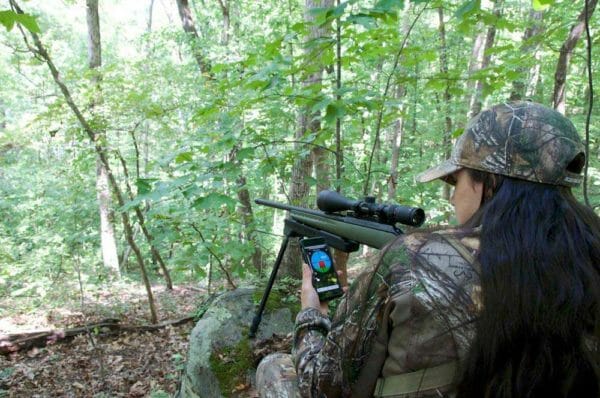
U.S.A. –-(AmmoLand.com)- For most people, “Barometric Pressure” is just a number on the weather app, and often ignored because we want the crucial info: Is there rain on the way? Warm today, or cold?
For the long-range shooter, though, barometric pressure is a significant factor in making solid hits. There’s no better way to factor in the barometric pressure than by using Ballistic, the #1 long-range shooting app.
Barometric Pressure, also called Atmospheric Pressure, is the amount of pressure present in the air at any given place at any given time. Think of it this way: the Earth is surrounded by a layer of gasses, the “atmosphere.” At sea level, this layer is at its thickest (from the ground to atmosphere’s end), and this equates to higher barometric pressure, compared to the top of a mountain where the pressure is less (less air mass above the top of the mountain) and therefore creates lower barometric pressure.
Weather fronts moving in or out can also greatly affect barometric pressure.
Barometric pressure is often measured in inches. The higher the number, the higher the barometric pressure, and vice-versa.
What does all this mean for the long-distance shooter? Well, at a higher barometric pressure, a bullet experiences more resistance. Therefore, it will drop less more the same bullet moving at the same speed through air with a lower barometric pressure.
For example, consider a rifle chambered in 6.5 Creedmoor, the ammunition loaded with a 140-grain Hornady ELD Match bullet. Muzzle velocity is 2,710 feet per second, and the rifle is set with a 100-yard zero.
At the same altitudes, but at very different barometric pressures, the bullet drop between these two scenarios is significantly different. For an extreme example, Ballistic Pro Shooter Logan Brown notes that at a high barometric pressure of 30.00 versus an extremely low pressure of 25.00, the difference in the above bullet’s trajectory at 1,000 yards can be nearly 30-inches. That’s huge!
Best advice: Logan says to update your Atmospheric Conditions on Ballistic as you move from place to place, and as weather fronts move in and out. Ballistic will automatically recalibrate your projectile’s trajectory based on the atmospheric inputs and changes to those inputs, placing you on target no matter the conditions.
On target, whatever the conditions: that’s the Ballistic promise!
About Ballistic App
Ballistic is the definitive ballistics trajectory calculator, intended for long-range and precision shooters who want a serious–and a seriously accurate–application. Ballistic will calculate your bullet’s trajectory, windage, velocity, energy, lead, and flight time for any valid range. The app can also compensate for atmospheric conditions such as temperature, barometric pressure, humidity, and altitude–it can even accept density of air or density altitude inputs! The world-renowned JBM Ballistics engine powers all Ballistic computations. Ballistic is used by competition shooters, long-range hunters, and the military to deliver the most precise calculations possible.
With Ballistic, you’ll be able to make the most accurate calculations for every shot, everywhere, even in areas with no cellular coverage.
For more information, please visit WWW.BALLISTICAPP.COM


Planning shooting in a cyclone, are you? “However, the lowest pressure ever recorded in a tropical cyclone (also the world’s lowest pressure) was recorded Oct. 12, 1979, in the eye of Typhoon Tip about 520 miles northwest of Guam when the pressure dropped to 870 millibars (or 25.69 inches).” Don’t use a ridiculous and impossible example. “The weight of the atmosphere on the surface of the mercury exerts a pressure transmitted through the fluid, forcing it to rise. The greater the weight, the higher the rise. The barometric pressure seldom goes above 31 inches or drops below 29 inches. Normal… Read more »
But if everyone knew all of that, how would anyone be able to sell them an ap? the Coriolis Force is as significant to long range shooting as barometric pressure is. And there’s an ap for that, as well.
There is literally no end to the amount of crap that a marketer wants to sell. 🙂
A fool and his money are soon parted. But, a fool that parts with his money for the right thingys, rings steel way beyond a fool who doesn’t……YMMV
I wasn’t implying that these aps are of no use. Only that the vast majority of shooters, particularity the newbies, (who are the most likely to think these gimmicks will help them to hit a target a 800 yards without bothering to learn anything, but that they can just have their phone do their shooting for them), would do much better to understand the ballistics of their partular bullet/powder/rifle combination first, because the gains there are much larger than any gains they might see from understanding humidity or the Coriolis Force. Not to mention the wind, which is very difficult… Read more »